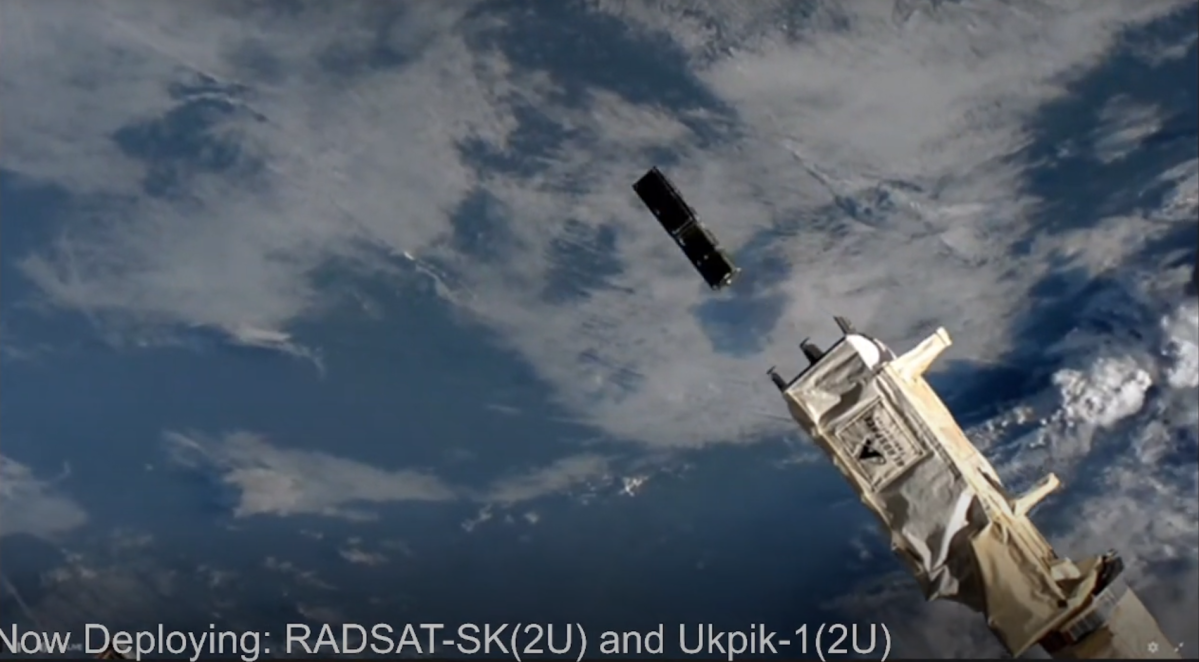It’s not every day a school project gets sent to space, but for students from the University of Saskatchewan, their own satellite has officially left the Earth’s atmosphere.

The students involved worked for five years on their RADSAT-SK CubeSat.
A CubeSat is a class of miniaturized satellites, measuring roughly 10 cm by 10 cm by 10 cm. Students say the satellite carries two experiments involving space radiation and was launched into orbit a month ago by a SpaceX Falcon-9 rocket.
Just this week, the satellite was launched from the International Space Station.
“It’s kind of unreal,” said Dustin Preece, a CubeSat project student and the technical manager. “Just to see the thermal tape on there, glimmer in the sun every once in a while. That was really cool.”
The CubeSat will test a new cheap radiation measuring device, and a radiation shielding epoxy made out of melanin.

While the project took five years to get off the ground, it felt like a short time for Preece.
“There was so much to do and at times the days blurred together,” he said. “It’s been an amazing journey and I’m just very grateful to have been part of it.”
Preece said CubeSats are far cheaper to launch than traditional satellites due to their size, making such projects more accessible for universities.
The satellite is part of the Canadian CubeSat Project that started in 2018, involving more than 2,000 students across Canada. Its aim is to boost interest in science, technology, engineering and mathematics while involving students in real space missions.
“(It’s) a very exciting moment for students in Canada who wish and dream of working in the space industry,” Tony Pellerin, a Canadian Space Agency (CSA) manager and technical lead of the project said in a recent interview.
The RADSAT was designed and developed at the University of Saskatchewan.
“Once we tested it, we took it to Montreal to the Canadian Space Agency headquarters,” Preece said. “And it launched from the Kennedy Space Centre in Florida.”
“For now, it’s an academic project and we’ll see where it goes,” he explained. “Hopefully it does help the radiation industry, the nuclear industry and the space industry too.”
Preece hopes projects like this continue to come out of Saskatchewan, and says he wants to continue developing and sending satellites into space.
“We’re proud to represent Saskatchewan, and we want to expand Saskatchewan’s presence in the aerospace and the space industry,” Preece said. “It’s just been a privilege to be on this journey with everyone.”




Comments